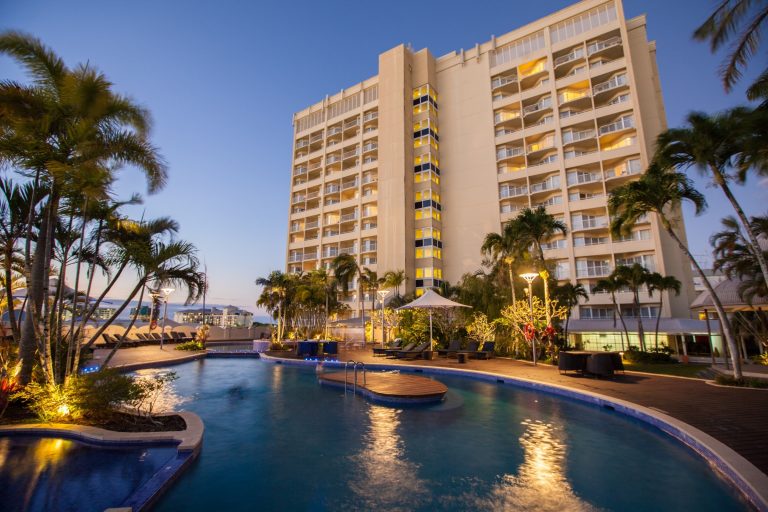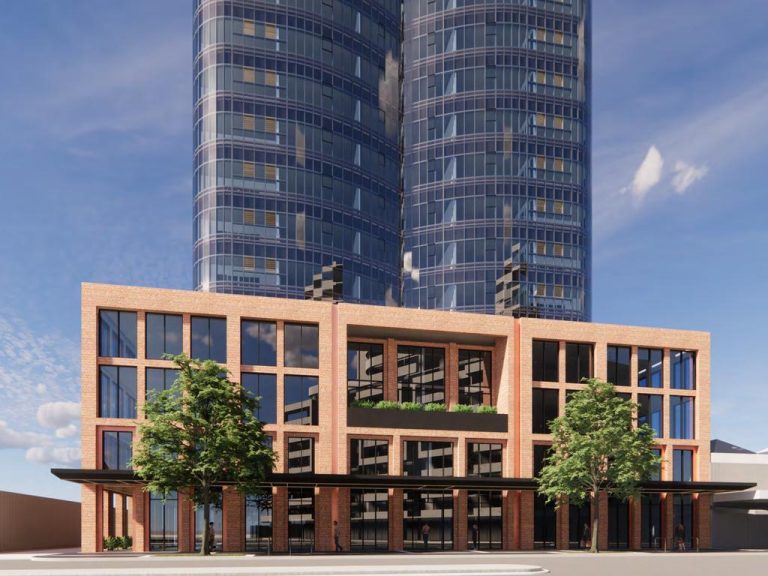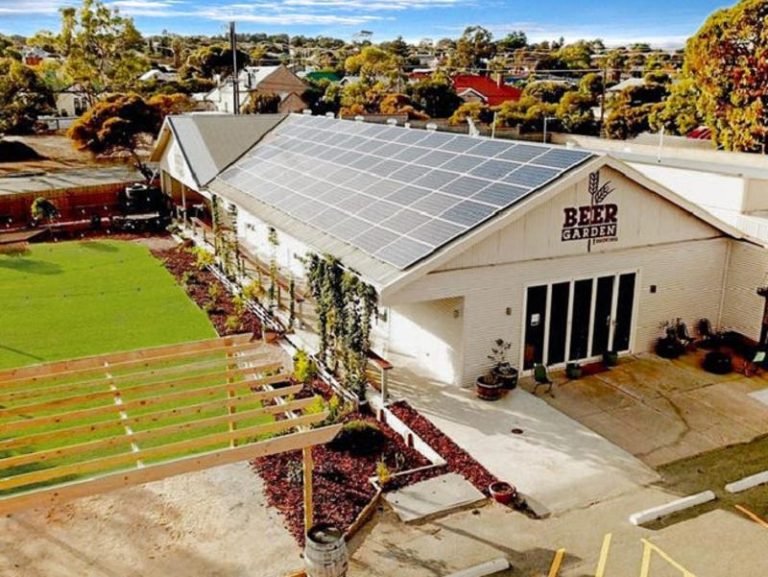Jump in cranes in use hides slump in residential construction
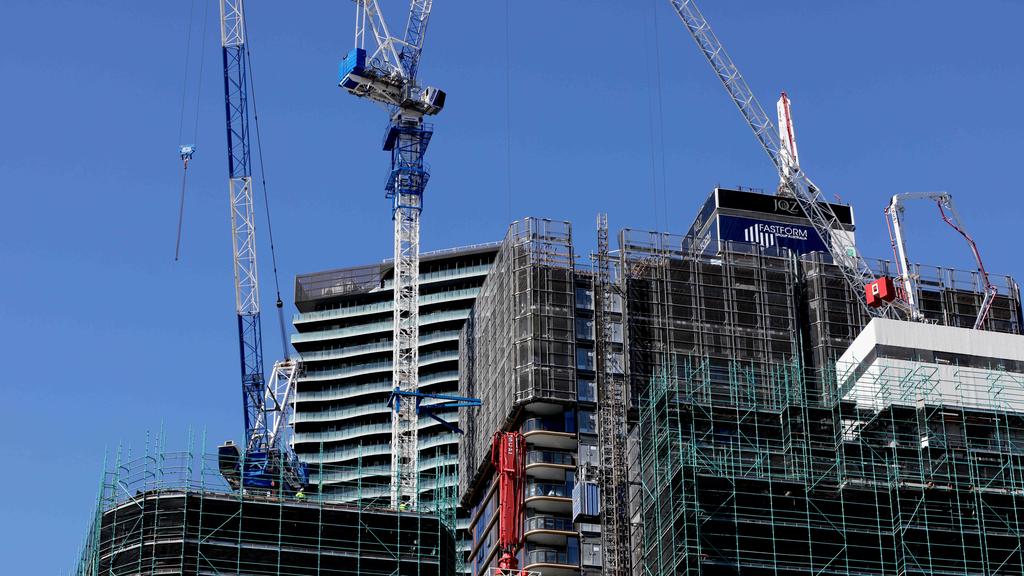
Construction consultant firm Rider Levett Bucknall’s latest Crane Index found 869 cranes were erected on job sites nationally through the first quarter of 2024. Picture: NCA NewsWire / Damian Shaw
Commercial property construction accounts for the majority of cranes dotting the skylines of Australia’s largest cities as residential projects struggle to get out of the ground.
Construction consultant firm Rider Levett Bucknall’s latest Crane Index found 869 cranes were erected on job sites nationally through the first quarter of 2024.
While the national figure was the second highest index score in the report’s six years, it masks a drop in the amount of work underway in the residential sector in light of the country’s housing crisis.
The residential index recorded 540 cranes nationally, six fewer than at the end of 2023. While 210 cranes were added to residential projects last quarter, 223 were removed from sites. Meanwhile, a steady 329 cranes were erected on non-residential sites, representing 38 per cent of the national total.
Sydney continued to lead construction activity with 309 cranes on worksites. Meriton’s Victini and Destination residential project was the Harbour City’s largest worksite with five cranes commissioned, while four cranes were required at several key state government projects, including the Powerhouse Parramatta, Western Sydney Airport at Badgerys Creek and WestConnex at Rockdale.
But it was Melbourne that gained the most cranes over the quarter, up a net 16 to total 194. The Victorian capital had a record number of cranes on civil projects, which included the Westgate Tunnel, North East Link, the Metro Tunnel project, and the promised removal of level crossings across the state.
Other sectors also recorded gains, including data centres (up four), mixed use (up five), residential (up 13) and retail (up one). The city’s latest Amazon Fulfilment Center, due to be completed in 2025, required more cranes than any other worksite, with a count of seven.
RLB’s Oceania director of research and development Domenic Schiafone said the current crane numbers in Sydney and nationally were “well above” their respective average.
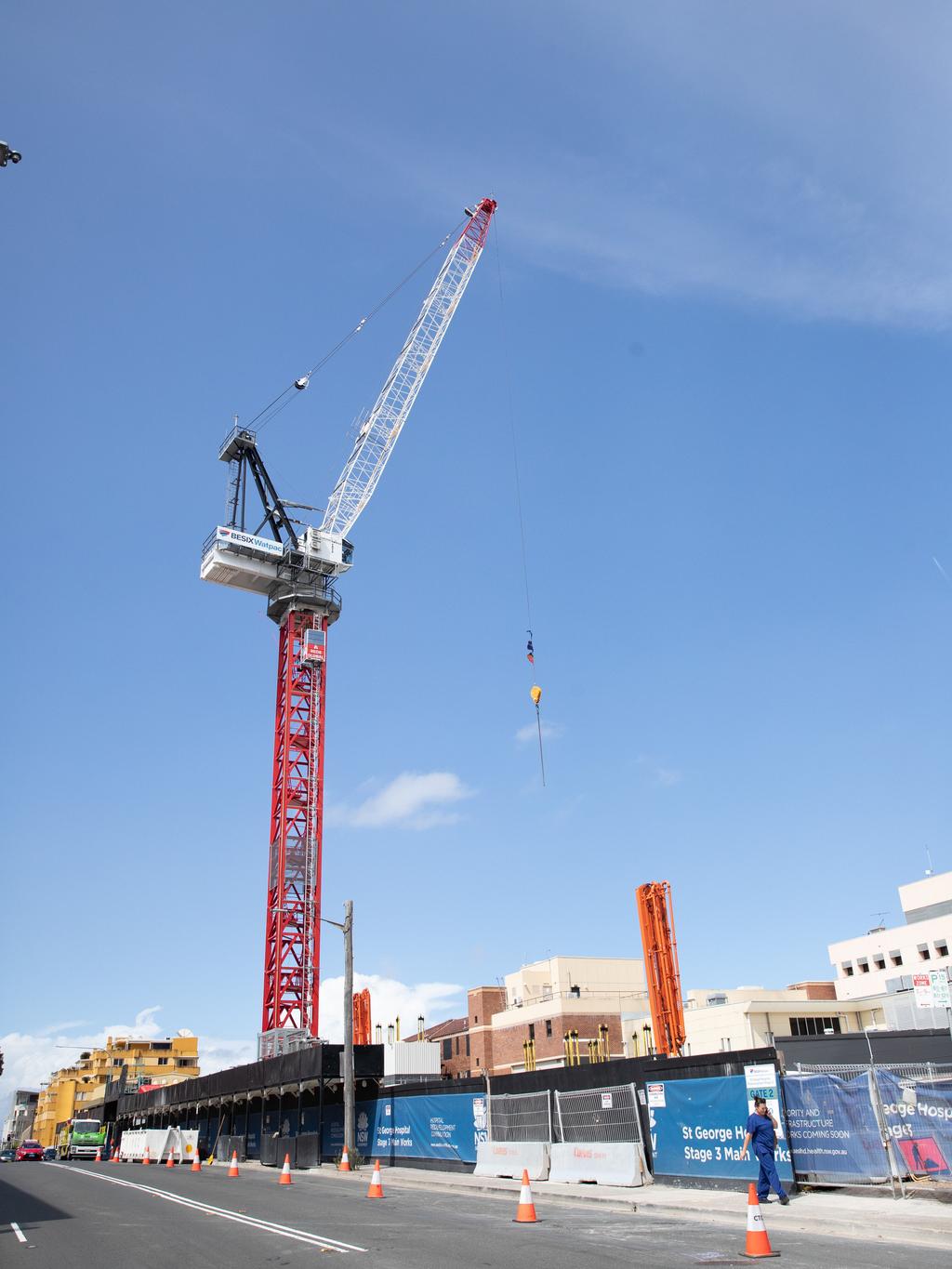
The residential index recorded 540 cranes nationally, six fewer than at the end of 2023. Picture: NCA NewsWire / Christian Gilles
“The large number of cranes observed correlates with national construction activity,” Mr Schiafone said. “According to the Australian Bureau of Statistics, total construction activity across Australia for the 2023 calendar year was up by 9 per cent, or $21bn, compared to 2022.”
Significant work is under way in southeast Queensland, with a total of 78 cranes erected in Brisbane, the Gold Coast had 61 and the Sunshine Coast noted 16 last quarter.
The Gold Coast was the only region nationally that recorded significant levels of residential work, with almost nine in 10 of the expanding city’s cranes on housing sites. Twenty-two new cranes were added over the first quarter at three luxury high-rise projects at Mermaid Beach, Balinga and Palm Beach, and two at Main Beach, Broadbeach and Kirra.
The other sectors with cranes in the Queensland border region were aged care, commercial and education.
Elsewhere nationally, 45 cranes were visible in Perth, 26 in Canberra, 17 in Adelaide, 16 in Newcastle and a dozen in Sydney satellite cities of Wollongong and The Central Coast. Just two cranes were erected in Hobart, while Darwin had none.

